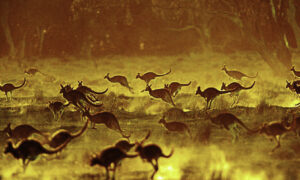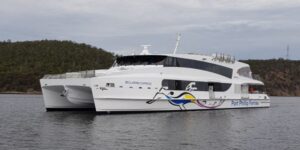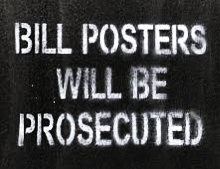Welcome to the 12th edition of The Best Mouse Tap. For the first time we have two guest bloggers who introduce some interesting diversity: traditional bush cooking and why Australia’s Pacific aid should be built on ferries, together with your weekly dose of politics. Guest Editor: The Pangolin
How to Cook a Kangaroo – Part 1
Recollections of Charlie
I saw first hand how desert aborigines cook kangaroo at a place called Tjiterong, 500 km due west of Alice Springs, where the east west running MacDonnell Ranges begin to peter out to a series of red quartzite hills rising to about 50 metres above the surrounding plains with the water runoff making for the relatively lush arid mulga and native grass land that can support the red kangaroo of the inland.
To the north the Tanami and Great Sandy Deserts are the lands of the Warlpiri, Pintubi and Mardu respectively while the south has the Great Victoria and Gibson Deserts of the Pitjantjatjara, Ngatajara and too many others to mention here. Precisely it is the meridian 129’ which forms the border of WA and NT; funny how Australian borders follow post-enlightenment Cartesian geometry devoid of the human history goings-on that usually define boundaries.
In my travels I was gratified to learn that the desert clans occupying about a third of the Australian continent are not as diverse as the 50-odd different ‘tribes’ illustrated on the Australian Institute of Aboriginal and Torres Strait Islander Studies (AIATSIS) map. They all have the same kinship names like Tjpangarti, Nampitjinpa from the Great Australian Bight to the Kimberley with the same core words like marlu (kangaroo) warru (fire) and watti (man).
This is background. What I write about Pintubi is based on my experience and may be contrary to the ethnographic record.
We were at Tjiterong to get a truck tray load of gravel to make concrete splash pads beneath the taps on the water pipeline being made for the new community of Kintore. With me was Henry Tjapaltjarri – about my then age 30, Tony Tjupurrula about 15, a son of the fearsome Freddy West Tjakamarra, jovial Pinta Pinta (meaning butterfly) with his child Matthew. Adam “King Kong” Gibson who had the manly stature of his father the noble Yala Yala Gibson Tjungarrayi, and the “poor bugger” Frankie Tjungarrayi who everyone called Tjina Bompa owing to his awkward spastic walk and mental disorder.
Pinta Pinta was the elder, aged perhaps 37, spoke little English and had met “white fellas” in about 1965 when the western Pintubi were induced by declining numbers and an easier life to move to missions and government run settlements. The hole through his septum marked him as an enthusiast for traditional lore. Circumcision and some chest scars and maybe a front tooth knocked out (as Henry had) were the initiation pain for manhood but only the keen went for having a hot kangaroo bone pierce their septum. I had seen in general company how Pinta Pinta had the kind of face that smiled easily, was not taken too seriously in general company, and so lived up to his name “butterfly”, but with the men at ceremony he was accorded great respect saying a lot with great enthusiasm. He also was ngangkarri (medicine spirit).

Well before the creek, Pinta Pinta and Henry simultaneously sighted a pair of red roos that bounded off. The hunt was on. We had to stop to tie up my dog Danger who would have bolted after them and to get my 22 magnum rifle from behind the Land Cruiser seat and then ride on the back tray with the rest of the crew. Finding the roo track Henry drove at a good pace till he sighted the roos again and accelerated after them. Holding onto the ute tray bar with my hook arm and the loaded rifle in my good hand was fraught to say the least. The ute swerved between mulga trees and crunching over dead fallen ones with exposed spiked mace-like roots that looked like they would impale a tyre at any moment. Staying on board with loaded gun was difficult enough, let alone taking a shot and it seemed that Henry was intent on running the roo down with the bull bar anyway. But I started to worry less about a crash as it became apparent Henry was an exceptional off road driver, way better than me and the HJ 45 diesel Land Cruiser was the hardiest 4 x 4 ever made. There was no chance of shooting anything in the rumble of the chase and I lowered myself to squat on the “ute” tray to wait hopefully for the end to the mad chase.
Frankie, Tony and Allan were having the time of their lives shouting out suggestions on tactics and direction. There were perhaps six roos in the mob and we would lose sight of a couple only to find another lot again in the thin mulga. After about 15 minutes it became calm as Henry slowed to driving steady and slow, taking wide sweeps of the terrain then pulled up, diesel engine idling “clunk clunk.” There was something there judging by the talking, quiet but eager up front, and “hush hush” tone of the fellas on the back of the ute with me. (to be continued)
Charlie McMahon is the bush polymath, leading exponent of didgeridoo, inventor of the Didgeribone and co-founder of internationally acclaimed band Gondwanaland.
Safer ferries for the Pacific islands: A politically valuable aid export opportunity in Oceania
Neil Baird
The very obvious fact that Prime Minister Scott Morrison chose the Solomon Islands as his first destination following his re-election last month confirmed the importance of our Pacific island neighbours in the minds of many aware Australians.
Numerous recent ferry tragedies in Indonesia, the DR Congo and Hungary (reported dramatically in The Australian) and, earlier last year, another in Kiribati, the second in nine years in that tiny country, reminded me of the obvious opportunity that exists for Australia to contribute to the elimination of such distressing events.
In mid-2018, I wrote to the then Minister for International Development and the Pacific, Senator Concetta Fierravanti-Wells, outlining the following proposal. I received no reply from her but I am not discouraged. I continue to believe that it is an excellent and very practical idea.
Our overseas aid organisation, AUSAID, is involved with numerous assistance programmes in many of the “Happy isles of Oceania”, as Paul Theroux ironically called them. I’m sure that many of them are very worthy. However, from my observation of some of them, I note that most of the money involved, apart from the usual large slice that goes to Canberra, is spent beyond both the islands themselves and Australia. I suspect that Toyota, for example, is a major beneficiary of our aid.
While, rather than being “happy”, many of the isles of Oceania and to our “near north” appear more likely to be as impoverished and dysfunctional as Kiribati unfortunately is. And, worse, most of the aid programs aimed at them appear to be “finger in the dyke” exercises of little lasting economic benefit. I am sure we could do much better.
All of Oceania is extremely archipelagic in terms of geography. In other words, the only practical way to get around is by boat, more specifically by ferry. Here lies a major problem. Many of the ferries operated in such countries are unsafe. Indeed, over the past fifteen years there have been at least five significant fatal ferry accidents in the Oceania region and many, many more in south and east Asia that we know about. In Oceania alone, those accidents have resulted in more than 500 fatalities, a big slice of the small local populations. In Asia, of course, the toll is dramatically higher.
There are three main causes of those safety deficiencies. They are all, obviously, driven by poverty. The islanders cannot afford to buy and maintain safe vessels or to have them competently crewed.
We will probably never really know precisely why the most recent (2018) Kiribati tragedy occurred but, given the similarity of the vessels concerned and their common ownership, with that in the last such event in 2009, it is a fair bet that an unsafe, badly maintained, overloaded, incompetently crewed vessel proceeded to sea in unsuitable conditions. Most such accidents in developing countries occur for one or more of those human error based reasons. The numerous Indonesian disasters of the past twelve months will undoubtedly prove to have had similar causes.
From my travels and observation in the area, as well as the recorded facts, I have learnt that such problems are endemic. I also know that far superior solutions to the latest Fijian one are readily available in Australia. To explain: a Fijian company recently purchased a more than 65 year old monohull Ro-Pax ferry from BC Ferries of Canada. Can you imagine buying a 65 year old aircraft? That ferry was designed for the sheltered waters of British Columbia, not the trade wind exposed seas of Fiji. It also happened to be un-saleable in North America because it is riddled with asbestos. However, it was cheap. So too were the Princess Ashika and Rabaul Queen that sank in 2009 and 2012 in Tonga and PNG respectively, with at least 400 fatalities between them. It is rumoured that the same Fijian company has tried to purchase a further two similar vessels from Canada!
Therein lies part of the problem; the others are maintenance and crew training. All are areas where Australia has considerable expertise and resources. We are renowned for designing, building and maintaining safe, economical ferries, mostly catamarans. We also have a number of excellent maritime training organisations including the Australian Maritime Academy and the Australian Maritime College.
So, we do have excellent potential solutions. But, as obviously the islanders cannot afford to purchase Australian vessels and training themselves, that gap must be bridged by aid. Such aid would benefit both the islanders and the Australian maritime industry, rather than Toyota. I raised this suggestion early last year at a regional maritime safety conference in Port Moresby. It was warmly welcomed by the maritime safety authority directors of all the Pacific island nations who participated.
We have numerous naval architects and ship builders for whom the design and construction of simple, strong, safe, low-maintenance and comparatively cheap ferries would be straight-forward. Our maritime schools are already training islanders, just not enough of them. We already supply many of the island nations with Pacific Patrol Boats and their trained crews. Why not do something similar with ferries? An aid programme based on the Pacific Patrol Boat template would be simple to implement. Ferries would be much cheaper than patrol boats and, arguably, more effective. For the same money as we spend on patrol boats we could supply many more ferries.

I realise that the patrol boats have their uses. They have improved the island nations’ incomes by ensuring the payment of fishing access fees and they have rescued lost fishermen and helped in disaster relief operations. However, new safe ferries could help prevent significant loss of life and also assist in rescues, poacher pursuit and disaster relief. A Pacific Ferry Programme could be developed using the patrol boat programme as a model although, hopefully, with less chaotic and expensive Canberra input.
Rather than funding cultural centres and basket weaving classes that have little or no economic or social benefit, how about we renew our aid programme focus to something more practical and valuable? Something, co-incidentally, that has more direct benefit to Australia and not Japan, China or Korea?
Neil Baird PhD is non-executive Chairman of Baird Maritime, a leading global maritime trade publisher. Neil has expert knowledge on fatal ferry accidents, their causes and how to prevent them. He is a former chairman of the World Ocean Council and the Australian Marine Environment Protection Association; a director of the Australian Shipbuilders Association; a member of the Domestic Ferry Safety Committee of INTERFERRY, the international association of ferry owners; and co-convenor of that organisation’s FerrySafe programme, sponsored by the Lloyd’s Register Foundation.
Chisholm – My last rumination on the Lessons from 2019 Election
I grew up the electorate of Chisholm as it is now. It was outer suburban, white and Anglo-Celtic. When I first voted it was Bruce, then a safe Coalition seat. Over the years as the population has grown, electoral boundaries have shifted and Bruce a long way away in suburban terms, from where I first voted, to Dandenong.
The biggest population centre in Chisholm, Box Hill, has grown to be a major transport hub and the whole immediate area around the train station resembles a suburban Chinatown.
In the last election in 2016, Julia Banks won the seat against the swing to the Labor party unexpectedly. Her Greek heritage never seemed to be raised as her reason for her election although there is a sizeable population of Greek heritage in the community.
This time the two major parties pitted two women of Chinese extraction against one another. The Liberal Party held the seat although there have been rumblings about a poster in Mandarin, which it is alleged gave the impression that it came from the Australian Electoral Commission, ostensibly favouring the Coalition candidate. There is no accompanying English translation.
What was not emphasised was that the redistribution of the electorate favoured the Coalition to the same degree almost as much as the final margin. In other words, although a marginal seat, it was notionally distributed to more a Liberal seat. There was a swing to Labor of 2.2 per cent – close but no cigar!
The psephologists will be at work trying to work the Chinese voting pattern. However, the controversial poster started me wondering about the local Chinese language newspapers. I cannot remember any of the mainstream press regularly summarising the stories which appear in Mandarin and any commentary and opinion which accompanies any reports.
There is increasing academic activity in determining how the Chinese population receive their media. A survey of 500 people of Chinese extraction was undertaken by an UTS academic, who stated the following summary of his findings:
Our findings suggest that to reach the majority of Australia’s Mandarin-speaking media consumers, stories need to be:
- picked up by local Chinese-language digital media outlets
- delivered via a WeChat public subscription account (which individuals access using a mobile phone app)
- directly relevant to the interests of Chinese migrant communities.
I can read the English version of the Chinese government opinion if I want to, but I have no idea whether the Mandarin version says the same thing.

Not that I am paranoid but the election poster written in Mandarin without any English version I find disturbing if it purports to represent AEC policy. There was no translation readily available on election day, and in a way I am surprised the AEC did not order its removal, even though the AEC is widely reported as having said the posters had been properly authorised, no laws had been breached and anyway the AEC didn’t “own the colour purple”.
Everybody bangs on about a multicultural society, but for better or for worse English is our national language, and therefore it becomes a matter of judgement how far we press for English sub-titles in public matters.
In a free and open society English is most spoken and read, and society should conform to this language as the major form of public communication. This is not to denigrate maintaining cultural diversity in private, the need for interpreters, and public displays of multi-cultural harmony.
In summary, matters of public importance should be clearly displayed in English. Thus, the Chisholm poster should be subject to a formal review so we can get our rules clear. In so doing clear advice can be provided to countries who may be tempted to bypass the English language in order to seek an advantage, even if it is only a poster in the colours of the AEC on election day.
Mouse Whisper
My learned friend has queried polling and the voting patterns among voters of Chinese extraction. Before the Bennelong by-election in 2017, Bennelong was said to be the most “Chinese” Federal electorate, and the Fairfax media reported:
“An online poll of the Chinese community seen on Monday by Fairfax Media indicates Labor’s candidate, former NSW premier Kristina Keneally, holds a large lead over the Liberals’ John Alexander, drawing 66 per cent of the votes.
The ongoing poll is being circulated on the popular Chinese social media app WeChat by Sing Tao Daily, the largest Chinese newspaper in Sydney, and ends on Thursday.”
In fact, John Alexander retained the seat 55 to 45 per cent at the by-election. The Chinese must be different, some say in defence of the poll. Which leg do you want to pull?
Nevertheless, this disparity may say something, but then I am only a mouse with a murine brain. Does that not say something about polls? You know the ones that repeatedly put one radio performer at the top of the radio ratings in Sydney – and how many polls did the Federal Coalition lose in a row? As I said, all too much for my murine brain to handle.
